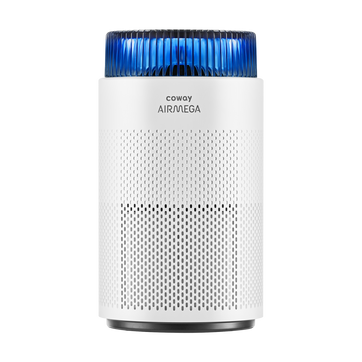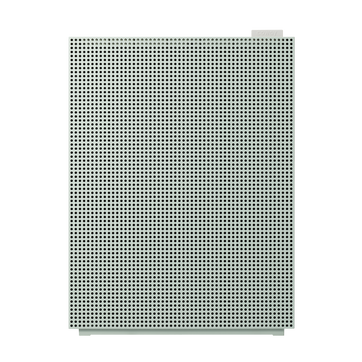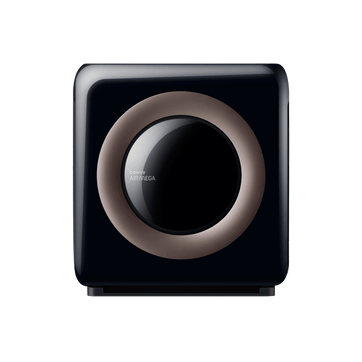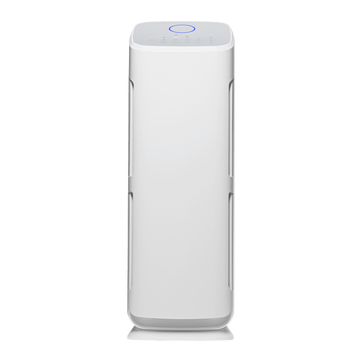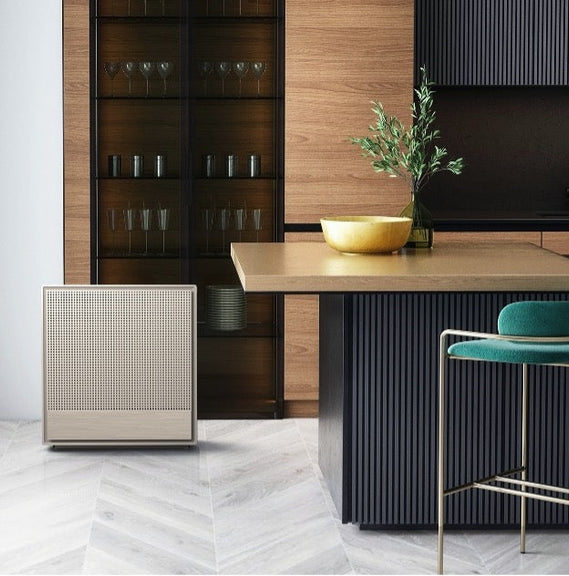
10 Sustainable Habits for Better Indoor Air Quality
Ever noticed how much better you sleep after a day spent in nature? Or how a stuffy room makes it harder to focus? Your home's air quality plays a powerful role in your everyday life. According to environmental experts, indoor air can contain significantly higher levels of pollutants than outdoor air. With so many of us spending upwards of 90% of our time indoors, the air we breathe at home directly impacts our health, well-being, and daily comfort.
As we've seen from global environmental shifts in recent years, air quality improvements are possible when we adopt more sustainable practices. The good news is that you don't need to wait for global change—you can take meaningful action to improve your home's air quality starting today.
1. Prioritize Source Control
The EPA identifies source control as the most effective strategy for improving indoor air quality. This means eliminating or reducing individual sources of pollution rather than simply trying to filter them out afterward.
Start by identifying potential pollution sources in your home:
- Conventional cleaning products containing harsh chemicals
- Pressed wood furniture that may emit formaldehyde
- Gas stoves and heating appliances
- Paints, solvents, and adhesives
When possible, remove these sources or replace them with lower-emission alternatives. For instance, choose solid wood furniture over pressed wood, opt for low-VOC paints, and store chemicals like paint thinners in detached spaces rather than inside your living areas.
2. Adopt Mindful Ventilation Practices
Proper ventilation dilutes indoor contaminants and improves overall air quality. The EPA recommends increasing outdoor air ventilation whenever possible, especially during activities that generate high levels of pollutants like cooking, cleaning, or hobby work.
Create a ventilation routine that works with your climate:
- Open windows on opposite sides of your home to create cross-ventilation
- Use exhaust fans in kitchens and bathrooms to remove moisture and pollutants
- Consider a whole-house ventilation system for consistent air exchange
For homes in areas with outdoor air quality concerns, smart ventilation becomes crucial. This is where advanced air purification systems like the new Airmega 350 and 450 truly shine. Their intelligent sensors continuously monitor air quality, automatically adjusting operation when ventilation alone isn't sufficient to maintain clean indoor air.
3. Embrace Natural Cleaning Alternatives
Conventional cleaning products often release volatile organic compounds that contribute to indoor air pollution long after you've finished cleaning. Rethinking your cleaning cabinet can help create a more sustainable home environment.
Try these natural alternatives:
- White vinegar for disinfecting and cutting grease
- Baking soda for scrubbing and deodorizing
- Steam cleaning for chemical-free sanitizing
- Microfiber cloths that trap particles without needing chemical cleaners
These natural options effectively clean your home while dramatically reducing the chemical burden on your indoor air. For those times when stronger cleaning is needed, ensure proper ventilation and consider running your air purifier on high to capture airborne chemicals.
4. Establish Green Barriers Against Outdoor Pollutants
While we often focus on pollutants generated inside our homes, outdoor pollutants can easily find their way indoors. Creating effective barriers helps maintain a cleaner indoor environment.
Sustainable barriers include:
- Implementing a no-shoes policy to prevent tracking in outdoor pollutants
- Using doormats made from natural materials at all entrances
- Installing weather stripping around doors and windows to reduce infiltration
- Maintaining a smoke-free home environment
These simple practices significantly reduce the amount of outdoor particulates, pesticides, and allergens that make their way into your living space.
5. Maintain Optimal Humidity Levels
Balancing indoor humidity is crucial for preventing mold growth and reducing dust mite populations—both significant contributors to respiratory issues and allergies. The EPA recommends keeping indoor humidity between 30% and 50%.
Sustainable humidity management includes:
- Using exhaust fans during moisture-generating activities like showering and cooking
- Fixing leaky plumbing promptly to prevent moisture accumulation
- Considering houseplants that naturally help regulate humidity (without overwatering)
- Using energy-efficient dehumidifiers in problem areas like basements
By keeping humidity in check, you not only improve air quality but also protect your home from moisture damage, creating a more sustainable living environment. Just be sure to keep your air purifier and humidifier clearly separated—placing them too close together can throw off your purifier’s sensors and reduce performance.
6. Upgrade to Revolutionary Air Purification
The latest generation of air purifiers represents a significant advancement in-home air quality management. The new Airmega 350 and 450 models exemplify this technological evolution, with innovative features designed specifically for sustainability-conscious consumers.
The Airmega 350 efficiently purifies spaces up to 2,640 square feet hourly, while the more powerful 450 handles an impressive 3,285 square feet. This extensive coverage makes them ideal for today's open-concept homes and larger living spaces.
What makes these models truly revolutionary is their HyperVortex™ technology:
- The cylindrical design creates a powerful vortex through bottom air intake
- Eagle Vane Design features aerodynamic blades inspired by eagle wings
- Dimple Duct Technology reduces air resistance, similar to golf ball dimples
- The result is optimized airflow with minimal energy use and noise
For eco-conscious consumers, these ENERGY STAR-certified units operate efficiently, with power consumption ranging from just 9W to 65W per hour. The Eco Mode automatically adjusts based on air quality conditions, powering down when pollution levels remain low and activating when needed—a truly sustainable approach to air management.
7. Practice Sustainable Cooking Habits
The simple act of cooking can release surprising amounts of particulate matter and gases into your home. Creating more sustainable cooking habits improves both indoor air quality and energy efficiency.
Consider these practical changes:
- Always use your exhaust fan when cooking (and clean it regularly)
- Choose induction or electric cooking over gas when possible
- Use pressure cookers and slow cookers that release fewer particulates
- Avoid overheating oils to their smoke point
For homes with the new Airmega 350 or 450, placing the unit near but not directly adjacent to the kitchen allows it to capture cooking emissions without interfering with the cooking process or becoming clogged with grease particles.
8. Implement Regular Air Quality Maintenance
Just as you maintain other aspects of your home, establishing a regular air quality maintenance routine ensures consistent performance of your entire indoor air system.
A sustainable maintenance schedule includes:
- Vacuuming with a HEPA-filter vacuum twice weekly
- Dusting with microfiber cloths that capture rather than disperse particles
- Regularly cleaning or replacing HVAC filters
- Following the manufacturer's maintenance schedule for air purifiers
The new Airmega 350 and 450 models simplify this maintenance with user-friendly features:
- The hassle-free filter change system allows easy access through a side panel
- Pre-filters can be vacuumed clean every 3-4 weeks
- Filter replacement indicators eliminate guesswork
- Annual filter replacements (rather than monthly or quarterly) reduce waste
9. Cultivate Indoor Plants Strategically
While the EPA notes that current evidence doesn't support houseplants significantly removing air pollutants in homes, they do provide other benefits when used strategically. The key is selecting the right plants and positioning them thoughtfully.
Sustainable plant cultivation includes:
- Choosing species known for air quality benefits like spider plants or peace lilies
- Avoiding overwatering, which the EPA warns can promote microorganism growth
- Using plants to naturally regulate humidity in dry environments
- Considering vertical gardens for smaller spaces to maximize green benefits
Remember that plants serve multiple sustainability functions—connecting us with nature, potentially improving mental well-being, and, in some cases, serving as sustainable food sources through herb gardens.
10. Create a Holistic Air Quality Plan
Truly sustainable indoor air quality management requires thinking holistically about how all systems in your home interact. Rather than addressing individual issues in isolation, consider how they connect.
Elements of a holistic approach include:
- Seasonal adjustments to your air quality routine based on changing environmental factors
- Coordinating ventilation, filtration, and humidity control
- Considering the environmental impact of all air quality solutions
- Investing in high-quality, long-lasting equipment like the Airmega 350 and 450 that reduce waste from disposable products
The revolutionary design of these new models integrates seamlessly into this holistic approach, with intelligent features that adapt to your environment's changing needs without requiring constant manual adjustments.
A Breath of Fresh Perspective
Improving your indoor air quality isn't just about health—it's about creating a more sustainable living environment that respects both personal well-being and planetary boundaries. By implementing these practical, sustainable habits alongside advanced technology like the Airmega 350 and 450, you're taking meaningful steps toward a healthier home environment.
The innovations in these new models represent a fundamental shift in how we approach air quality—moving from reactive filtering to proactive, intelligent management that works in harmony with your lifestyle. Their thoughtful design ensures they complement your home aesthetics while delivering powerful performance that adapts to your specific needs.
Sustainability is a journey, not a destination. So, start with changes that feel manageable, and gradually incorporate more practices as they become part of your routine. Every step you take improves not just the air you breathe today, but contributes to a more sustainable future for generations to come.
For more information about sustainable air quality practices or to explore our revolutionary new Airmega 350 and 450 purifiers, visit our website today.
Disclaimers
1Coway air purifiers have been proven to trap dust, pollen, dander, viruses and bacteria in the air based on KCL (Korea Conformity Laboratories) testing.They have been tested in a 30㎥ size chamber according to the Korea Air Cleaning Association standard (SPS-KACA 002-132:2022 Modified) to measure the 0.01㎛ size of particle removal rate. It was tested on maximum airflow speed in normal room temperature and humidity conditions. The performance may vary in the actual living environment of customers.
→ Tested with Airmega Aim, 100, 150, 160, Airmega Tower AP-1216L, Airmega Mighty AP-1512HH, Airmega Mighty AP-1512HHS, 200M, Icon, IconS, 230, 240, 250, 250 Art, 250S, 300, 300S, 350, 400, 400S, 450, ProX
299.97% of viruses, bacteria, fungi and pollen were verified to be removed from the air for Coway air purifiers which have Green True HEPA™ filter applied based on the Japan Food Research Laboratories(JFRL) testing according to JEM 1467 standard.
→ Tested with Coway Airmega Mighty AP-1512HH, Airmega Mighty AP-1512HHS, 250, 250 Art, 250S, 300, 300S, 400, 400S
→ All tested by JFRL and received above result within below time.
All tested by JFRL and received above result within below time.
- Virus: Tested with Escherichia coli phage ΦX174 NBRC 103405, 60 minutes
- Bacteria: Tested with Staphylococcus epidermidis NBRC 12993, 60 minutes
- Fungi/Mold: Tested with Penicillium citrinum NBRC 6352, 60 minutes
- Pollen: Tested with Cedar Pollen extract, 60 minutes
3Aerosol test conducted in a Biosafety level 3 laboratory with two Coway air purifier models, Coway Airmega 250 and 400 for removal of SARS-CoV-2 Aerosol by US based MRI Global, a not-for-profit laboratory and partner of US Department of Defense. The test was conducted in a 13.1ft3 chamber. Virus was aerosolized for 15 minutes and the product was turned on high for 2 minutes. Result showed each product effectively removed over 99.98% of the SARS-CoV-2 in 2 minutes. This is a result from a laboratory experiment condition and result may vary in different conditions. This result does not imply it kills SARS-CoV-2 or prevents the transmission of Covid-19. Coway Airmega 250S and 400S are identical to the tested models and has equal performance with an additional mobile connectivity function.
4The concentration of ammonia, acetaldehyde and acetic acid were proven to be removed within 30 minutes by FCG Research Institute, Inc. Human Life Science Lab. It is not a demonstration result in the actual use space. Not all odors and gases may be supported. → Tested with Coway Airmega 150, 160, Airmega Mighty AP-1512HH, Airmega Mighty AP-1512HHS, 400, 400S
5The coverage area of the air purifier is based on an area where the air cleaner can make two air changes per hour (ACPH). An air change per hour translates to how many times an air purifier can clean an area, assuming the height of a ceiling to be 8 ft, in one hour. Therefore ** means two air changes per hour means that the cleaner can clean the area once every 30 minutes and * means air changes per hour means that the air purifier can clean the area once every 60 minutes.
10Terms and conditions apply. Discounts, including promotions, coupons, bundle discount and subscription discount, cannot be stacked on top of other coupons. During promotional periods, discount codes will not be able to be applied to orders. Promo codes may apply to products only—filters, accessories, and new products within 3 months of the release date are not included.






